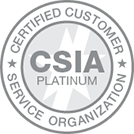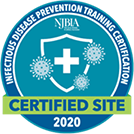Inbound marketing is taking the world by storm. But for those of you who’ve never heard of this concept, you may be scratching your head. What is inbound marketing? How is it any different than “normal” marketing?

According to the inbound marketing super gurus over at Hubspot, “Inbound marketing focuses on creating quality content that pulls people toward your company and product — where they naturally want to be. By aligning the content you publish with your customer’s interests, you naturally attract inbound traffic that you can then convert, close, and delight over time.”
Naturally, that’s where the title of this article comes in. “Attract, Convert, Close, Delight” is something that inbound marketers strive to do on a daily basis.
Today, we’re going to give you a brief rundown on what those four verbs mean in the inbound marketing sphere, and how you can use them to turn your association into an inbound marketing machine.

Attract
“Attracting” is all about bringing the right people to your website. Hubspot says, “We don’t just want any traffic, we want the right traffic.” And they’re right. Marketing is all about finding people who will invest in your products and services. So why not market directly to them?
Inbound marketing does just that. Practices such as regular blogging, coding a website for SEO (search engine optimization) purposes, and publishing regularly to social media platforms allow those searching for your products and/or services to find them more easily. Think of this phase as turning online strangers into website visitors.

Convert
“Converting” is the next stage of the inbound process. This involves collecting information from your website’s visitors and turning them into marketable leads.
Some ways you can get a website visitor to convert are forms, calls-to-action, and landing pages. If a website visitor is interested in your products and services (which is how they found you to begin with) they will give you their information without hesitation.

Close
Once you’ve collected contact information from your website visitors, they become “leads” in your marketing database. Now your job is to close the deal and turn them into customers. But how can you do this without being pushy?
Use email-marketing campaigns and customer relationship management systems (CRMs) to drip with useful, relevant conten,t while keeping track of the details of what they do or don’t like. This will allow you to see how you can better market to your leads while also allowing them to build trust in you.
The more comfortable a lead feels with a company, the more likely they are to buy from them when the time comes.

Delight
Closing a sale with a customer doesn’t mean you should forget about them completely! A good inbound company should engage with, delight, and (hopefully) upsell their current customer base into becoming happy advocates of the brand itself.
Email campaigns, surveys, and smart calls-to-action (calls-to-action tailored to customers based on their relationship with the company) are great ways to check in with your current contacts.
Gone are the days of cold-calling and reaching out to just anyone. Now it’s all about producing quality content and drawing people to you. Inbound marketing is the new name in marketing, and it’s here to stay.
For more information on inbound marketing, check out the BMS blog.
About the Author: Megan Turner is a copywriter at Business on Market St., a San Diego-based marketing agency specializing in inbound marketing strategy. Megan is in charge of running the Business on Market St. blog, where she enjoys writing about inbound marketing tactics and trends, as well as tips for online writing.




